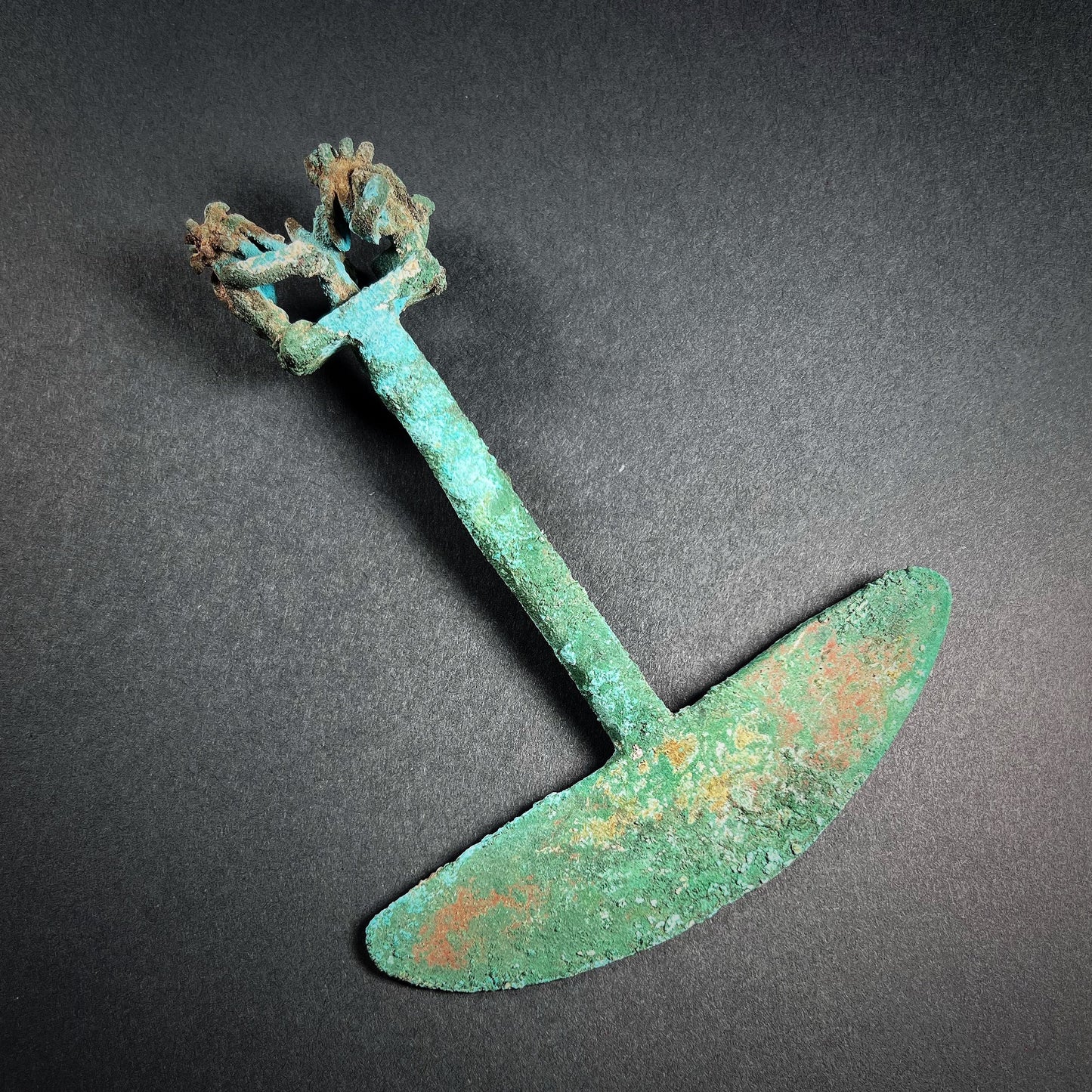Inca Ceremonial Copper Tumi with Figural Finial
Inca Ceremonial Copper Tumi with Figural Finial
Couldn't load pickup availability
Pre-Columbian Era, Inca Empire, c. 1438–1533 AD, Andes Region, South America
An exceptional Inca ceremonial copper tumi, this beautifully crafted sacrificial knife features a detailed narrative on the shaft, depicting a dramatic scene of an approaching llama sacrifice. A masked figure holds the llama’s tail and leash, while another stands poised with the tumi, ready to perform the ritual. The tumi’s crescent blade was used for sacrificial ceremonies during the Inti Raymi festival, which honored the Sun god and ensured a prosperous harvest.
Tumis were central to Inca rituals, where they were used to sacrifice llamas and even in surgical practices such as cranial trephination. Cast in copper, this beautifully detailed object offers a rare glimpse into Inca religious and medical traditions, making it a remarkable and sought-after collector’s item.
This extraordinary piece represents the Inca Empire's wealth, artistry, and spiritual practices, and is a must-have for collectors of ancient South American artifacts.
Excellent condition. Surface wear and abrasions commensurate with age, nicks and chip. Covered in layers of light-green, dark-green, and russet-hued rich patina. Encrustation. Size approx. 13,5cm x 3,6cm (blade 10,8cm) x 0,4cm.
Provenance: Swedish private collection
For a similar example see:
Knife (Tumi), The Metropolitan Museum of Art, Accession Number: 1987.394.230 (https://www.metmuseum.org/art/collection/search/315290)
References and further reading:
Inca Civilization, Mark Cartwright, World History Encyclopedia. Last modified September 15, 2014 (https://www.worldhistory.org/Inca_Civilization/).
The Incas and Their Ancestors : The Archaeology of Peru, Michael E Moseley, Thames and Hudson, 1992.
Life of the Incas in Ancient Peru, Jésus Romé & Lucienne Romé, Productions Liber, 1987.
The Incas: New Perspectives, Gordon F. McEwan, Santa Barbara, California: ABC-CLIO, 2006.
Ancient Inca (Part of Case Studies in Early Societies), Alan L. Kolata, University of Chicago, Cambridge University Press, 2013.





-
Shipping
The shipment will be prepared in the course of 3-5 days and dispatched via Posti Group Oyj or purchased item(s) can be picked up from our shop during the store's opening hours (Tarkk’ampujankatu 4, 00140, Helsinki, Finland). Within the Finland, all items are shipped via Posti Group Oyj unless otherwise requested. We pack the items carefully and mainly in recycled materials because we want to save nature. You will receive the tracking number for your items by e-mail.
-
Returns
Returns and exchange will be accepted within fourteen days (14) of receipt at the purchaser’s cost to include freight and packaging. Items must be returned in the same condition as when they were shipped, and will not be accepted if damaged or altered in any way. Please inform us via email (info@gotanmaailma.fi) or by calling +358408408352 before sending. We do not accept returns more than 14 days after delivery.





